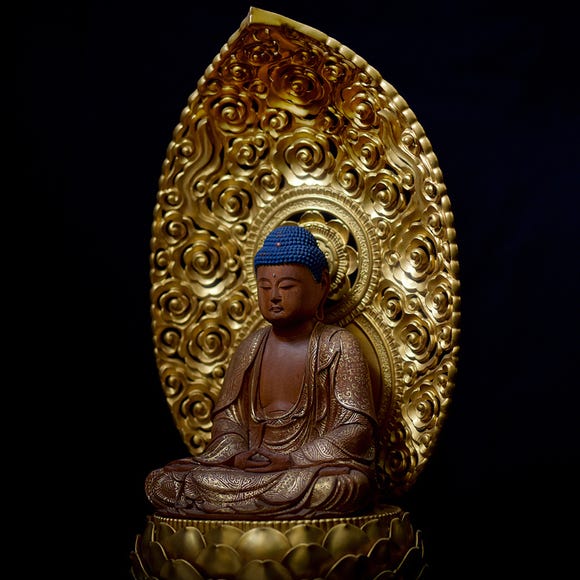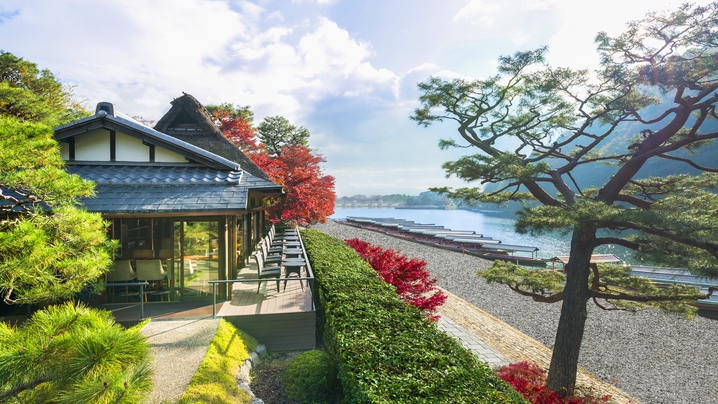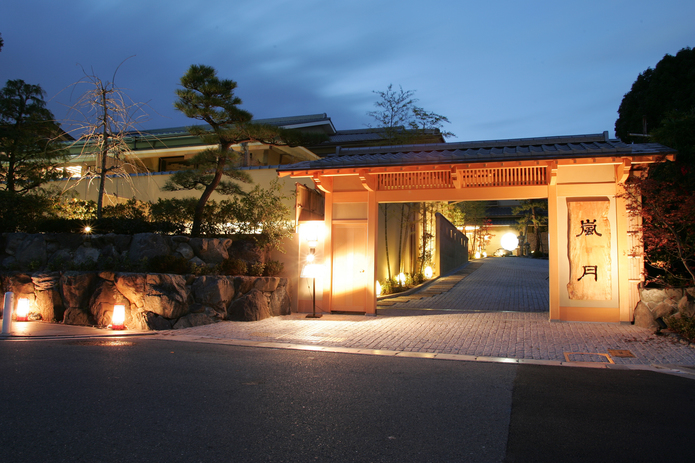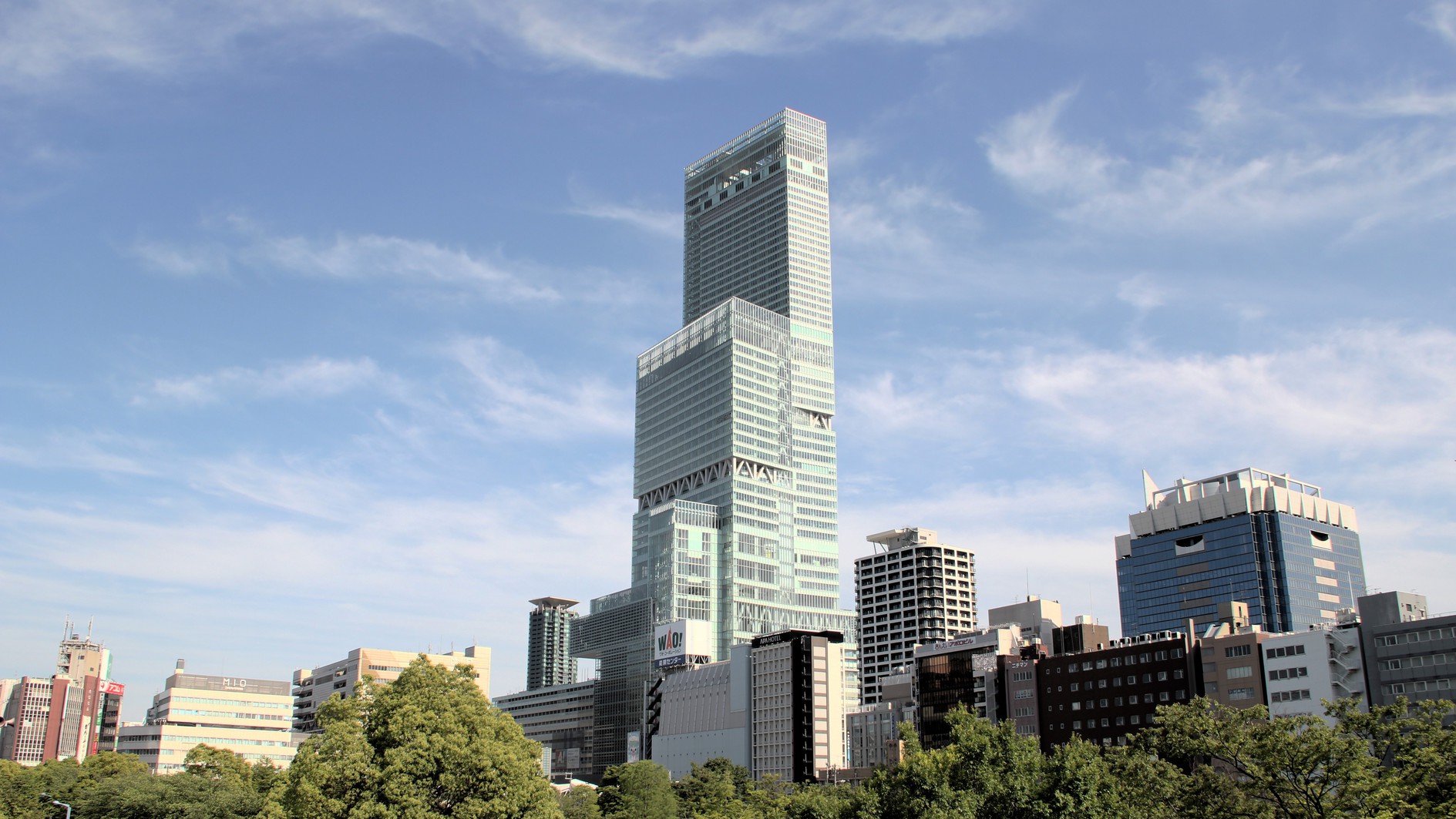
Tenjin Matsuri: Guide to Osaka's Thrilling Festival of Fire and Water (July 2025)
- Written by: LIVE JAPAN's editorial team
Every July, Osaka comes alive with the Tenjin Matsuri (天神祭), a spectacular celebration drawing 1.3 million visitors. The climax on July 25 features the grand Rikutogyo parade with 3,000 participants and the lantern-lit Funatogyo procession on the Ōkawa River.
Capping it all is a dazzling fireworks show that gives this ‘fire and water festival’ its name, along with the crowd-favorite Tenjin Festival Gal Mikoshi, adding even more energy to the scene.
What Makes the Tenjin Matsuri So Special?
If you're in Osaka in July, the Tenjin Matsuri is something you don’t want to miss. First held back in 951, this festival honors the deity of scholarship at Osaka Tenmangu Shrine—but don’t expect a quiet affair.
Over the course of a month, the city celebrates with traditional music, parades, and plenty of food stalls. The real action happens on July 24 and 25, with lively processions through the streets and along the river. Locals in period costume carry portable shrines, and crowds gather along the banks of the Ōkawa River.
The grand finale on the 25th is pure summer magic: about 100 illuminated boats float by as 5,000 fireworks light up the night sky. It’s one of Japan’s top festivals for a reason—and a great way to experience Osaka’s festive spirit up close.
Access and Directions
Osaka Tenmangu is a 1-minute walk from Osaka Tenmangu Station on the JR Tozai Line.
-

-
Address
Tenjinbashi, Kita-ku, Osaka-shi, Osaka, 530-0041
View Map -
Nearest Station
Tenjimbashisujirokuchome Station (Tanimachi Line / Sakaisuji Line / Hankyu-senri Line)
3 minutes on foot
- Phone Number 06-6353-0025
-
Address
Tenjinbashi, Kita-ku, Osaka-shi, Osaka, 530-0041
Tenjin Matsuri Event Schedule
The scheduled dates for 2025 are as follows. Please note that the venue, time, events, and other details provided are based on those of past years and are subject to change.
It is recommended to check the Tenjin Matsuri website beforehand for the most up-to-date information before visiting.
・Event Dates: July 24 - 25, 2024
・Venues: Mainly at and around Osaka Tenmangu Shrine, and others.
- 4 AM - Ichiban Taiko (First Drum, signaling the start of festivities)
- 7:45 AM - Yoimiya Festival (Eve Ceremony, a preparatory ceremony for the main festival)
- 8:30 AM - Hokonagashi Procession
- 8:50 AM - Hokonagashi Shinji (Procession and ritual involving the floating of a sacred spear)
- 11 AM - Angūsai (A ceremony conducted at a temporary shrine set up for the festival)
- 11:30 AM - Yamakage Ryūgishiki Hōchō Hōnō (A traditional knife ceremony dedicated to the gods)
- Noon - Tenjin Kōshi Lion Dance (A traditional lion dance performance in honor of the gods)
- 4 PM - Moyo-oshidaiko Jichijunkō (A procession featuring large festival drums)
- 4:15 PM - Entrance of Dondoko boats - Hokonagashi Kamikohōkan (The arrival of the Dondoko Boat and the ritual return of the sacred spear)
- 6:40 PM - Suijō Takiginoh (A traditional Noh performance held on the water)
- 7 PM - Moyo-oshidaiko (Procession featuring large festival drums)
- 7:30 PM - Lion Dance
- 1:30 PM - Honmiya Festival (The main ceremonial event of the festival)
- 2:15 PM - Shinreigyo (The movement of the divine spirit to a portable shrine for the procession)
- 3:30 PM - Departure for Rikutogyo Procession (A grand procession through the streets featuring various festival participants)
- 5:30 PM - Departure for Funatogyo Procession (A procession of boats decorated and lit up for the festival)
- 6 PM - Funatogyo (Boat Procession)
- 7:30 PM - Funajosai (On-Boat Festival)
- 7:30 PM - Fireworks (A spectacular fireworks display dedicated to the gods)
- 9 PM - Saitaiko no Miyairi Kaishi (Grand Taiko Drum Entrance Commencement)
- 10 PM - Kango-sai (The concluding ceremony of the festival, marking the return of the divine spirit to the shrine)
Highlights of the Tenjin Matsuri

1. Gal Mikoshi: Watch Women Power Through the Streets with a 200-kg Mikoshi

Held on July 23 as a pre-festival event, the Gal Mikoshi brings extra excitement to the Tenjin Matsuri. Originally called the Tenjin Matsuri Jōsei Omikoshi (Women's Omikoshi), it earned the nickname “Gal Mikoshi” as its popularity grew across Osaka.
During the spirited parade, eight women carry a 200-kg mikoshi through the lively Tenjinbashisuji Shopping Street, drawing cheers from the crowd.
2. Ichibandaiko: The Thunderous Drumbeat That Signals the Festival’s Start
The "Ichibandaiko" ceremony marks the vibrant start of the Tenjin Festival. At exactly 4 AM, the main gate of Osaka Tenmangu Shrine opens, signaling the official kickoff.
A performer known as the ganji of Moyo-oshidaiko strikes the giant ichibandaiko drum, its deep resonance filling the air and ushering in lively danjiri music and a dynamic dragon dance—instantly energizing the festival spirit.
3. Hokonagashi Shinji: An Ancient Ritual Led by Sacred Children

As part of the Tenjin Festival’s sacred rituals, the “Hokonagashi Shinji” involves releasing a white wooden hoko float into the Dojimagawa River to cleanse sins and impurities.
Local elementary school boys, chosen as “divine children,” lead this rite with solemn dedication. They follow strict purification customs and play a central role in guiding and releasing the float into the water.
4. Moyo-oshidaiko Jichijunkō: Feel the Pulse of the Festival Through Drums and Dance
The "Moyo-oshidaiko Jichijunkō" is a lively procession led by the powerful beats of the Moyo-oshidaiko drum and the encouraging chants of “Chesajaa” and “Sokojaa.”
As the drum echoes through the streets, it’s joined by the dramatic lion dance of the Tenjin Kōshi Shishi, creating a vibrant and unforgettable highlight of the Tenjin Festival.
- “Chesajaa” (チェサジャー) and “Sokojaa” (ソコジャー) don’t have literal meanings in standard Japanese—they’re traditional chants or calls used to energize performers and the crowd during the Tenjin Festival.
- These kinds of shouts are often rhythmic and used in festivals to create atmosphere, unify participants, and boost morale, similar to "wasshoi" in other Japanese festivals. Their origin may lie in regional dialects or be onomatopoeic, but today they're primarily used for their sound and emotional impact rather than linguistic meaning.
5. Suijo Takigi-Noh: Classical Noh Theater Performed Over Water
Among the stage boats in the Tenjin Festival’s "Funatogyo" river procession is the "Nohbune" (Noh boat), moored at OAP Harbor. Here, the captivating "Suijo Takiginoh" (Waterborne Torchlight Noh) is performed, bringing classical Noh theater to life on the water.
This elegant performance is accompanied by music from the Osaka Tenmangu Shrine Religious Society Federation and the spirited "Dondoko Funabune" procession—an evocative blend of tradition and celebration.
6. Honmiya Festival: Prayer for Osaka’s Peace and Prosperity
The "Honmiya Festival" takes place in the morning at Tenmangu Shrine, marking a solemn shift in the Tenjin Festival's energy. As the drums and float music pause, the ritual begins with prayers for the city’s peace, prosperity, and protection from disasters.
Once the ceremony starts, people gather and join the procession, symbolizing their shared role in the divine journey.
7. Rikutogyo Procession: Witness 3,000 People March in Stunning Tradition

The "Rikutogyo" is a grand land procession featuring around 3,000 participants in vivid traditional dress, marching from Osaka Tenmangu Shrine to the boat landing. This dazzling parade resembles a living scroll of history, with vibrant costumes and sacred objects offered in tribute to the gods.
Leading the way is the powerful Moyo-oshidaiko drum, struck by three performers known as "ganji," whose rhythmic beats and spirited shouts make for a truly unforgettable sight.
8. Funatogyo: Over 100 Boats Glide Down the Okawa River in a Majestic Parade

After the land procession ends, participants arrive at the boat landing near Tenjimbashi. Boarding begins with the Moyo-oshidaiko, and the "Funatogyo" boat procession sets sail on the Okawa River.
A variety of boats join the procession: the "Gohoren Houansen" carries the deity’s spirit, the "Kumihososen" transports the Moyo-oshidaiko and floats, the "Omukae-bune" welcomes the spirit with elegant dolls, and the "Houbai-bune" represent supporting organizations. Freely moving "Dondoko-bune" add energy to the scene, as fireworks light up the sky and reflect in the river for a stunning finale.
9. Funatogyo Senjosai: A Quiet, Sacred Ritual on the Water
During the boat procession, the "Funatogyo Senjo-sai" is held on the ceremonial boat—a solemn ritual where the deity surveys the lives of local worshippers and bestows divine protection.
As the ceremony takes place, nearby boats pause their music in silence as a mark of respect, offering a quiet farewell—an enduring and heartfelt tradition of the festival.
10. Fireworks Finale: The Sky and River Glow in a Dazzling Festival Climax

The Tenjin Festival concludes with a breathtaking fireworks finale. Watch as around 4,000 fireworks light up the Osaka night sky, mirrored by the glow of brazier fires on the 100 boats of the Funatogyo.
Don’t miss the festival’s signature firework, the kōbai, which bursts into the shape of an umebachi (plum bowl)—a symbol of Tenjin-sama, the deified spirit of Sugawara no Michizane.
11. Watch the Fireworks from Reserved Seats with Front-Row Views!

The Tenjin Festival ends with a spectacular fireworks display that lights up the Osaka night sky alongside the mystical glow of kagaribi (bonfires) on roughly 100 boats.
Around 4,000 fireworks are launched from Kawasaki Park and Sakuramiya Park, with the highlight being the Koubai—a stunning firework that blossoms into a plum flower, symbolizing the deity Tenjin. It's a must-see finale of color, tradition, and artistry.
How crowded is the Tenjin Festival? What are the things to remember during the festival?
If you're planning to watch the dedicated fireworks display, it's best to avoid using JR Sakuranomiya Station as it tends to get extremely crowded before and after the viewing.
Instead, consider walking from JR Osaka Tenmangu Station, Subway Minamimorimachi Station, or JR Kyobashi Station, which are closer to Osaka Tenmangu Shrine. This way, you can avoid some of the congestion. For a more comfortable viewing experience, it's advisable to purchase tickets for the reserved seating area in advance.
After the impressive Rikutogyo land procession, the traditional boat procession, and the bonfires lighting up the grand fleet, the festival reaches its climax as approximately 5,000 dedicated fireworks burst into the night sky! Just on July 24th and 25th alone, there are plenty of magnificent, vibrant, and enchanting highlights to see.
So, make sure to check the schedule for the parts you want to witness and head to the festival grounds. It's going to be an extraordinary experience!
Text by: Efeel Inc.
(*This article was originally published in June 2020 and updated in June 2025.)
LIVE JAPAN's editorial team is a multicultural mix of native editors who have lived in Japan for over five years, alongside Japanese editors with a deep passion for travel. We're devoted to sharing the wonders of Japan. From cultural insights and history to events, practical travel tips and coupons, we're here to help make your journey unforgettable!
*Prices and options mentioned are subject to change.
*Unless stated otherwise, all prices include tax.
Recommended places for you
-

ISHIDAYA Hanare
Yakiniku
Kobe, Sannomiya, Kitano
-

Kambei Sannomiyahonten
Yakiniku
Kobe, Sannomiya, Kitano
-

Kasuga-taisha Shrine
Shrines
Nara, Ikoma, Tenri
-
Goods

Yoshida Gennojo-Roho Kyoto Buddhist Altars
Gift Shops
Nijo Castle, Kyoto Imperial Palace
-

Jukuseiniku-to Namamottsuarera Nikubaru Italian Nikutaria Sannomiya
Izakaya
Kobe, Sannomiya, Kitano
-

Kanzenkoshitsuyakinikutabehodai Gyugyu Paradise Sannomiya
Yakiniku
Kobe, Sannomiya, Kitano
-

Kyoto Prefecture Guide: Destinations, Activities, Travel Advice, Shopping & More
-

Yuzuya Ryokan Kyoto Gion: Enjoy Gourmet Dining in a 100-Year-Old Kyoto Townhouse (In-Depth Review)
by: Yotsuka Hizuki
-

Experience Hotel New Otani Osaka: Overnight Journey of Japanese Culture and Fine Dining (2-Day Itinerary)
by: Yotsuka Hizuki
-

Hotel Universal Port: A Fun-Filled Stay Where You Can Meet the Minions (In-Depth Review)
by: Tabiningen
-

2025 Osaka-Kansai Expo: Convenient Tips for a Stress-Free Visit
by: Kaori Kimura
-

Hyogo Prefecture Guide: Destinations, Activities, Travel Advice, Shopping & More
by: Kaori Kimura
Inspiration for Accommodations
-

Spacious Family Hotel in Namba: 20 Comfortable Stays for Family Fun
-

Charming Hotels to Enjoy the Spectacular Views of Arashiyama's Autumn Leaves from Your Room
-

Experience Stunning Views of Osaka Castle from Private Spaces: Top Hotels Near Osaka Castle
-

Recommended by Visitors! Arashiyama's Best-Rated Hotels
-

Family-Friendly Universal Studios Japan Hotel with Excellent Access
-

Enjoy a Comfortable Stay in Osaka! 10 Hotels with Convenient Airport Shuttle Services
-

Top 10 Recommended Hotels Near Namba Station with Great Access
-

Enjoy Night Views from Your Room! Recommended Hotels in Namba Area
-

Fun in the Sun! Top 10 Things to Do This Summer in Osaka
-

Looking to Visit Kyoto in Summer? Here's Your Ultimate Guide to Kyoto Weather and Packing Essentials
-

Dining in Kyoto: Best Restaurants for Kaiseki, Sushi, Cafes & More
-

Osaka Tenjin Matsuri - The Top Japanese Festival That's a Spectacle of Fire and Water (July 24-25, 2024)
-

5 Must-Visit Nara Temples and Shrines: Discover the Timeless Beauty of Japan's Ancient Capital
by: WESTPLAN
-

Gion Matsuri Guide (July 2025): Access and Tips on Enjoying One of Japan's Three Great Festivals in Kyoto
- #best gourmet Osaka
- #things to do Osaka
- #what to do in kyoto
- #what to bring to japan
- #best gourmet Kyoto
- #new years in Osaka
- #what to buy in nanba
- #Visiting Osaka
- #onsen tattoo friendly arima
- #daiso
- #Visiting Kyoto
- #best japanese soft drinks
- #japanese fashion culture
- #japanese convenience store snacks
- #japanese nail trends



















